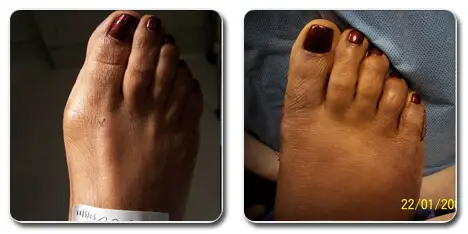How to exercise with bunions: dos and don'ts
Exercise is an essential part of a healthy lifestyle, but it can be challenging to find the right routine when you have bunions. Bunions are a painful bony bump that forms at the base of the big toe. They can make it difficult to find comfortable shoes and participate in physical activities. However, it is possible to exercise with bunions safely. In this article, we will discuss the dos and don'ts of exercising with bunions.
DO: Choose the Right Shoes
Choosing the right shoes is crucial for exercising with bunions. Look for shoes with a wide and deep toe box that can accommodate your bunion. The shoe should fit comfortably and provide ample support for your feet. Avoid shoes with high heels or narrow toe boxes, as they can exacerbate the problem.
DON'T: Do High-Impact Exercises
High-impact exercises like running, jumping, or aerobics can put a lot of stress on your feet, especially if you have bunions. Instead, try low-impact exercises like swimming, cycling, or walking. These exercises are less stressful on your feet and can still provide an excellent cardiovascular workout.
DO: Strengthen Your Feet
Strengthening your feet can help alleviate pain caused by bunions. Try exercises that focus on the muscles in your feet, such as toe curls, toe spreads, and toe taps. You can also use a tennis ball or golf ball to massage the bottom of your feet and stretch your toes.
DON'T: Ignore Pain
If you experience pain while exercising, stop immediately. Pain is your body's way of telling you that something is wrong. Rest your feet and try a different exercise or activity. It's also essential to listen to your body and not push yourself too hard.
DO: Warm Up and Cool Down
Warming up and cooling down are essential for any exercise routine, but they are especially important when you have bunions. Start with a few minutes of gentle stretching to warm up your feet and prepare them for exercise. After your workout, take a few minutes to cool down and stretch again.
DON'T: Wear Tight or Restrictive Clothing
Tight or restrictive clothing can constrict your blood flow and exacerbate pain caused by bunions. Opt for loose-fitting clothing that allows your feet to breathe and move freely.
DO: Work with a Professional
Working with a professional, such as a physical therapist or a personal trainer, can help you create a safe and effective exercise routine. They can help you choose exercises that are appropriate for your fitness level and provide modifications to accommodate your bunions.
In conclusion, exercising with bunions is possible with the right precautions. Choose the right shoes, avoid high-impact exercises, strengthen your feet, don't ignore pain, warm up and cool down, avoid tight clothing, and work with a professional. By following these dos and don'ts, you can exercise safely and alleviate pain caused by bunions.
See Also:
- lapiplasty bunion surgery pros and cons
- shoes for swollen feet
- bunion surgery recovery week by week
- best bunion corrector
- best shoes after bunion surgery
- what to expect 3 weeks after bunion surgery
- heels for flat feet
- shoes for cuboid syndrome
- how to get rid of tailor's bunion without surgery?
- what to expect 2 weeks after bunion surgery
- sneakers with ankle support
- bunion anatomy
- best shoe to wear with walking boot
- bunion pain relief home remedies


Nhận xét
Đăng nhận xét